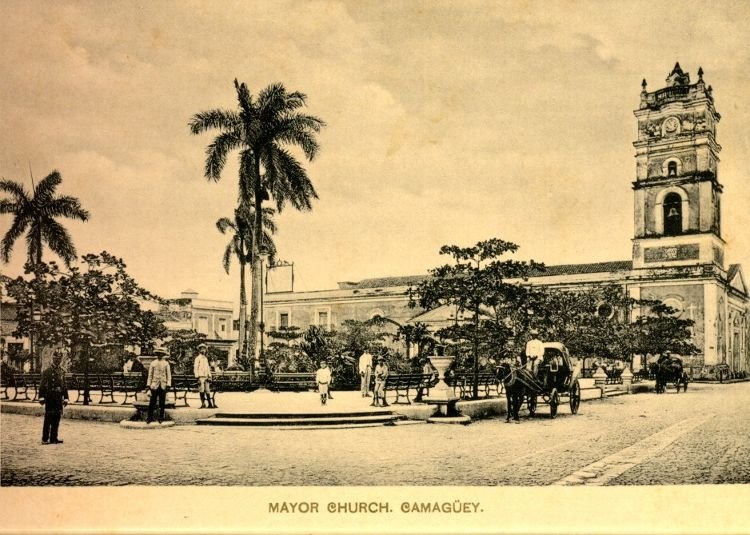 Imagen no sujeta a derechos de autor
Imagen no sujeta a derechos de autor
« A este no lo salva ni el médico chino…» expresaba en tono burlón un rostro desconocido. La frase, transmitida de generación en generación y que forma parte del imaginario popular de la Isla de Cuba, da por pensado que hace alusión a un personaje real, y no meramente ficticio, muy conocido y respetado al parecer por sus conocimientos o habilidades en la época en la que vivió o se desarrolló, y es precisamente acerca de la historia de esta figura que les vengo a contar el día de hoy.
«Not even the Chinese doctor saves him» an unfamiliar face mockingly expressed. The phrase, passed down from generation to generation that is part to the popular imagination of the Island of Cuba, takes for granted that its refers to a real character, and not merely fictional, well known and respected apparently for his knowledge and skills at the time in which he lived and developed, and it is precisely about the story of this figure I come to tell you today.
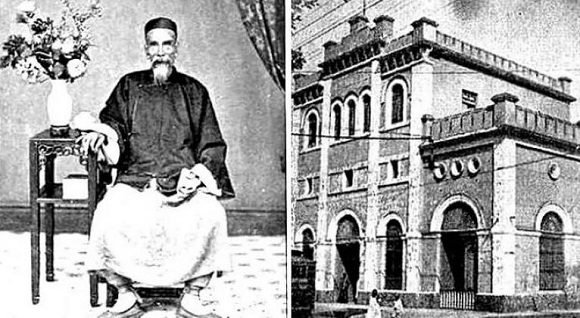 Imagen no sujeta a derechos de autor
Imagen no sujeta a derechos de autor
A muchos les resultará curioso saber que en la Cuba del siglo XIX existieron al menos dos médicos chinos famosos. El primero se nombraba Cham Bom Biá, quien apareció en la Habana por allá por el año 1858, y que por su perspicaz ojo clínico y sus conocimientos de medicina tradicional y de herbolaria, donde utilizaba elementos de origen chino y cubano, que mezclaba con los adelantos de la medicina occidental, no demoraría mucho en hacerse notar y crear una marcada clientela.
Many will find it curious to know that in 19th century Cuba there were at least two famous Chinese doctors. The first was named Cham Bom Biá, who appeared in Havana around 1858, and who, due to his keen clinical eye and his knowledge of traditional medicine and herbal medicine, where he used elements of Chinese and Cuban origin, which he mixed with advancements of Western medicine, it would not take long to become noticed and create a strong clientele.
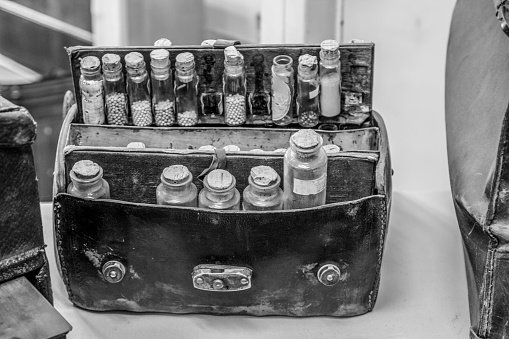
Cuentan los que saben de historia que «era un hombre de estatura elevada, ojos vivos y penetrantes y luengos bigotes».
Those who know history say that «he was a man of tall stature, keen and penetrating eyes and long mustaches».
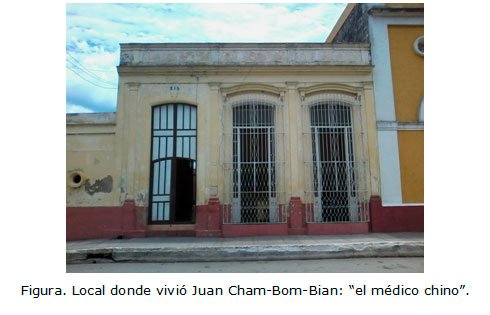 Imagen no sujeta a derechos de autor
Imagen no sujeta a derechos de autor
Tras ser acusado de ejercicio ilegal de la medicina, sale de la Habana para instalarse en la ciudad de Matanzas y más tarde, aproximadamente en el año 1871, llegar a la región de Cárdenas, donde monta su consultorio y vuelve a ganar fama y prestigio al tratar incluso a pacientes desahuciados ya por médicos importantes de la zona, llegando a devolverles la salud, la vista, el uso de sus miembros, etc. Hizo curas en casos difíciles de disentería, asma, fiebres y agotamientos. Cobraba a los que podían pagarle y de los más pobres no aceptaba dinero: «si tiene linelo paga pa´mi, si no tiene, no paga, yo siemple da la medicina pa´gente poble». Un día menos pensado fue encontrado sin vida en la casa donde vivía solo y la causa de su muerte nunca se precisó.
After being accused of illegally practicing medicine, he left Havana to settle in the city of Matanzas and later, approximately in 1871, arrive in the Cárdenas region, where he set up his practice and regained fame and prestige by treat even patients who have already been evicted by important doctors in the area, returning them to health, sight, the use of their limbs, etc. He made cures in difficult cases of dysentery, asthma, fevers and exhaustion. He charged those who could pay him, and from the poorest, he did not accept money. One day less thought was found lifeless in the house where he lived alone and the cause of his death was never specified.
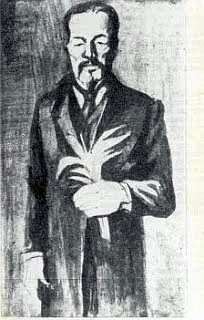
Imagen no sujeta a derechos de autor
El otro, oriundo de Pekín, se llamaba Siam, quien se asentó en Camagüey en 1848 y no demoró mucho tiempo en llamar la atención entre sus vecinos. Mediantes sus curaciones, ganó mucho prestigio y llegó a ser tildado de hechicero no solo por sus milagrosos remedios, sino por la ignorancia de los que le rodeaban y el celo que despertaba entre sus homólogos. Se vincula en 1850 al cristianismo, quizás con el objetivo de despojarse de los rumores e incorporarse a la sociedad donde pensaba residir y ejercer su profesión. En los archivos de la Parroquia Mayor consta que recibió el bautismo el 25 de abril de 1850 y adoptó el nombre de Juan de Dios Siam Zaldívar.
The other, a native of Beijing, was called Siam, who settled in Camagüey in 1848 and did not take long to attract attention among his neighbors. Through his cures, he gained a lot of prestige and came to be branded a sorcerer not only because of his miraculous remedies, but also because of the ignorance of those around him and the zeal he aroused among his peers. He was linked to Christianity in 1850, perhaps with the aim of getting rid of rumors and joining the society where he planned to reside and practice his profession. In the archives of the Mayor Church it is recorded that he received the baptism on April 25, 1850 and adopted the name of Juan de Dios Siam Zaldívar.
El médico logró amasar una gran fortuna, solía desplazarse en un lujoso carruaje y vestía con un traje negro al modo occidental.
The doctor managed to amass a great fortune, he used to travel in a luxurious carriage and wore a black suit in the western way.
 Fuente/Pixabay
Fuente/Pixabay
Fallece el 23 de marzo de 1885. En la sección de Flores y Espinas del diario «El Camagüeyano», se expresó en una breve nota:
«El lunes por la tarde se dio la sepultura al cadáver de don Juan de Dios Siam, hijo del celeste imperio, que había ejercido entre nosotros con buen éxito en la ciencia de Galeno»
He died on March 23, 1885. In the Flores y Espinas section of the newspaper El Camagüeyano, It was stated in a short note:
"On Monday afternoon the corpse of Don Juan de Dios Siam, son of the celestial empire, who had practiced among us with good success in the science of Galen, was buried."
¿Será Cham Bom Biá o Siam quien dio origen al refrán «esto no lo arregla ni el médico chino»?
